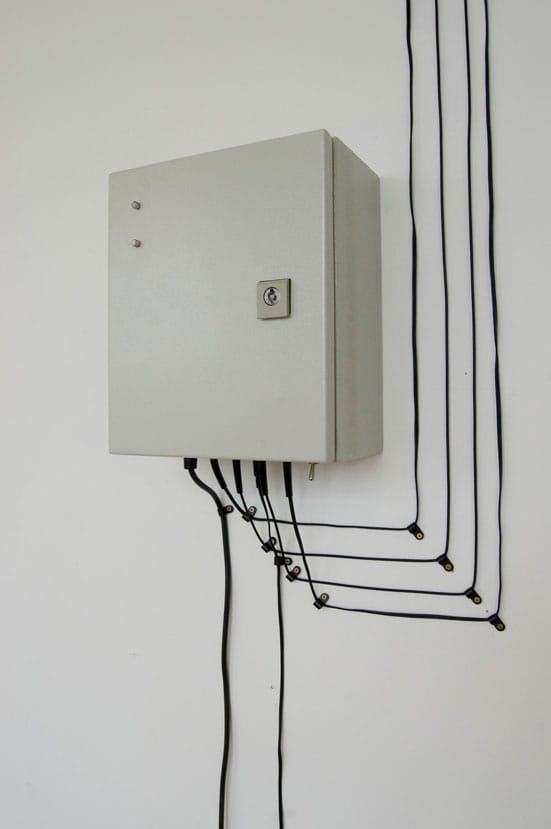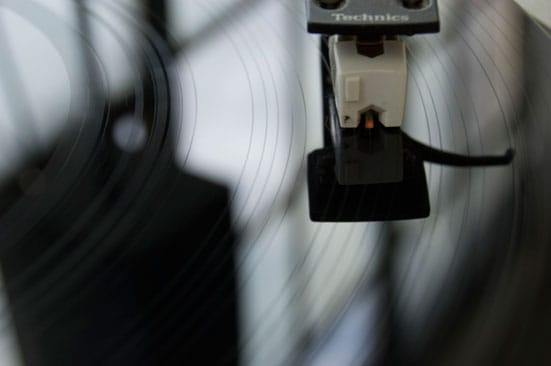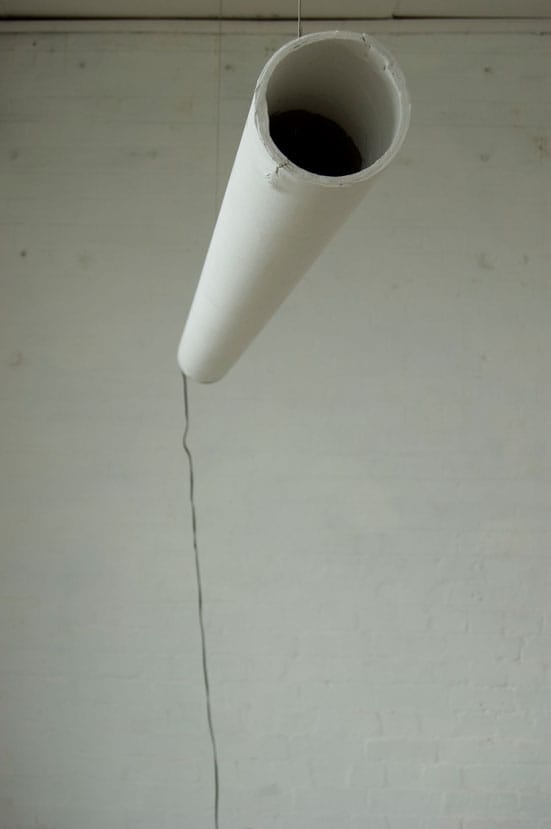16th July 2010 — 2nd August 2010
The Pigeon Wing
Top Floor (front),Guild House Rollins Street, SE15 1EP
16 July- 2 August 2010
In a sequence of collaboration Alastair T. Willey and Sarah Jury, the team behind South East London art space The Pigeon Wing, invited curator Lisa Baldini to present an exhibition. Baldini in conversation with artist Tom Richards decided on an interconnected sequence of sound objects as an installation for the young gallery space.
Richards, who has previously performed with Alex Thomas as part of Matt Stokes' Club Ponderosa in Project Space 176, treads the fine line between sound art and composition. Having been initially trained in sculpture, his objects have traversed the line from being sculptures with sound to becoming sound generated by sculptural objects. It may seem a superfluous distinction but for me the question, whether it is sound art or music stands at the beginning of this exploration. In the first instant I was drawn into the space by the sound alone. The prop-like installation of a table and a few not very distinctive and quite functional objects, plinth, electrical cabinet and speakers does not immediately capture the eye. The title of the show speaks of appliance as a clue. By their very nature appliances are meant to be devices with limited function usually designed to facilitate modern living, hence, such objects are humble in appearance, colour and design. There is much plain wood here, accompanied by the beige, greys and black of standard issue electronic components from the pre-digital days.
So, since I don't see much, I most attentively hear the jagged but lingering rhythm of breath-like patterns. Contrary to the cliché of sound in art this does not interfere, interpret or surprise. This sound soothes with confident sequencing and bearable pitch levels. There is a gliding interconnection between the sound patterns, which translates into credible percussion, recurring in intervals just short enough not to bore, long enough to reveal subtle variation of a theme. An overall rich hum underpins the live composition. The hum is pre-recorded on vinyl, again an emphasis on old technology. Interestingly for the ipad age, the dated technology is not presented as quaint or historical, there is no notion of an archive here, just plain functionality. As art is commonly accused of being far from functional, there is a defiant tone to this display of technologically credible devices in their plainness, all designed by the artist who, by most standards, must be a bit of a broadcast electronics buff.
Nevertheless all this functionality does not deflect from the fact that I am hearing very good music, fluxus infused, influenced by early electronica. This is holding together even over extended listening periods, just like a credible composition. It is possible to get this kind of sequencing very wrong. Richards gets it right though maybe a tiny bit too orderly to scale the heights of some of his predecessors. A little limitation born of the fact that this is art on the edge afterall? Aside from the credible stab at continuing the legacy of musical phenomena like La Monte Young (New York from 1960), Earth's drone doom (Seattle since 1989), Masami Akita aka Merzbow ( Tokyo from 1978), Einstuerzende Neubauten/ Blixa Bargeld ( Berlin from 1980) or the experimental side of Brian Eno's output, this piece also offers a commentary on the current visual discourse of paired down aesthetics. The barely-there-presentation of white plinth and tubes in the whitewalled space, the unobtrusive placement of the objects at good distance from each other, the choice of humble materials such as cardboard, metal, wood, are all testament to the aesthetics of now. There is of course a twist and that twist is the live mixing element, which breathes life into the “critique-of-the-gallery-revealing-the-means” type presentation. Also, the paired down objects move very subtly. Richards has designed his sequencers in such a way, that the inserted speaker membranes produce a rhythmically aligned sucking and expulsion motion, which strangely humanises the factual machines. It also makes the close inspection of the work pleasurable. Where you normally glide off reductionist sculpture into a purposeful absence of meaning, here you start forming unhealthy friendly attachments to the objects, as they keep more than just your sense of sound occupied. I may be strange, but I was tempted to stroke the metal box. Cables emanating from every possible output converge in the centre of the floor, where another motionless black box transformer translates inter-dependant signal sequences into new combinations, which echo back into the space from three wired up cardboard tubes. The tubes throw the gaze back into the gallery space towards the one unconnected device, a plain table, which holds two turntables and a mixer, set to simultaneous generation of a continuous atonal hum, by admission of the artist himself a nod to La Monte Young's deliberately fixed frequency pitches. If sound is the entry point of the installation, the visual lines themselves neatly echo the random coherence of the electronic composition. Of course, ultimately it does not matter whether this is sound art or art with sound, what matters is that it functions musically as well as aesthetically.
If you are a closet fan of Seventies' electronic music or just like to spend more than the standard four minutes of exploring a work of art, Richards could be one artist to follow. He also performs live as part of his practice. He made for an interesting DJ at his performance at The Pigeon Wing, although I prefer to see the work in its unabridged version.
Bea de Souza

Installation shot courtesy the artist

Installation shot courtesy the artist

Installation shot courtesy the artist

Installation shot courtesy the artist

Installation shot courtesy the artist

Installation shot courtesy the artist